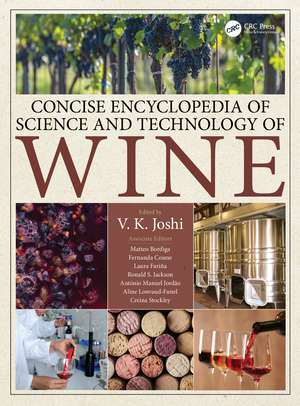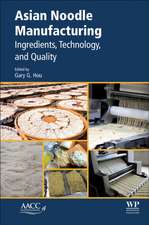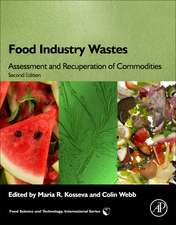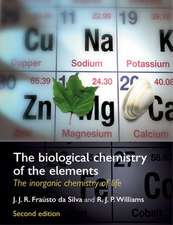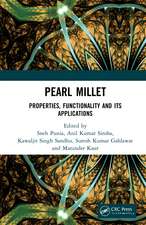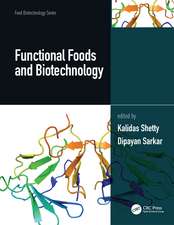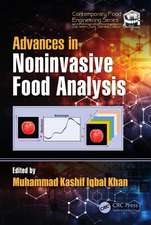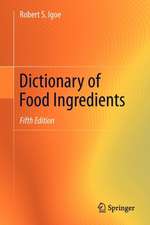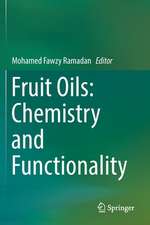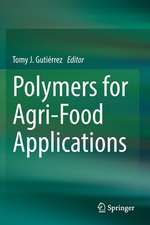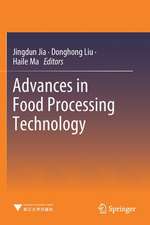Concise Encyclopedia of Science and Technology of Wine
Editat de V. K. Joshien Limba Engleză Hardback – 22 iul 2021
This book reveals state-of-the-art technology of winemaking, describing various wine regions of the world and different cultivars used in winemaking. It examines microbiology, biochemistry, and engineering in the context of wine production. The sensory qualities of wine and brandy are explored, and the composition, nutritive and therapeutic values, and toxicity are summarized. Selected references at the end of each chapter provide ample opportunity for additional study.
Key Features:
- Elaborates on the recent trends of control and modeling of wine and the techniques used in the production of different wines and brandies
- Focuses on the application of biotechnology, especially genetic engineering of yeast, bioreactor technological concepts, enzymology, microbiology, killer yeast, stuck and sluggish fermentation, etc.
- Illustrates the biochemical basis of wine production including malolactic fermentation
- Examines marketing, tourism, and the present status of the wine industry
Preț: 1991.27 lei
Preț vechi: 2665.44 lei
-25% Nou
Puncte Express: 2987
Preț estimativ în valută:
381.07€ • 413.79$ • 320.10£
381.07€ • 413.79$ • 320.10£
Carte tipărită la comandă
Livrare economică 22 aprilie-06 mai
Preluare comenzi: 021 569.72.76
Specificații
ISBN-13: 9781138092754
ISBN-10: 1138092754
Pagini: 710
Ilustrații: 150 Tables, black and white; 133 Illustrations, color; 158 Illustrations, black and white
Dimensiuni: 210 x 280 mm
Greutate: 2.13 kg
Ediția:1
Editura: CRC Press
Colecția CRC Press
ISBN-10: 1138092754
Pagini: 710
Ilustrații: 150 Tables, black and white; 133 Illustrations, color; 158 Illustrations, black and white
Dimensiuni: 210 x 280 mm
Greutate: 2.13 kg
Ediția:1
Editura: CRC Press
Colecția CRC Press
Cuprins
Introduction, Role, Composition and Therapeutic Values. Wine and Brandy: An Overview. Types and Classification of Wine and Brandy. Wine Producing Regions of the World. Compositional and Nutritional value. Wine and Brandy: Therapeutic Value. Toxicological aspects of Wine Consumption. Viticulture For Wine Maker. Fruit Cultivars and Cultural Practices. Genetic Engineering in Fruit Crops for Wine Production. Fruit Growth and Associated Changes. Fruit Maturation and Wine Making. Botrytis and Production of Wine. Influence of Fruit Varieties on Wine Quality. Microbiology and Biochemistry of Wine Production. Microbiology of Wine Making. Non –Saccharmyces spp in Wine Making. Physiology and Growth Factors of Wine Yeast. Wine Making: Biochemistry. Cultures of Yeast and Bacteria for Wine Production. Wine Making: Malolactic Bacteria. Genetic Engineering of Microorganisms for Wine. Factors Affecting Wine Making, Control and Improvement. Killer Yeasts and Winemaking. Stuck and Sluggish Fermentation of Wine. Enzymes in Wine Making. Control and Modeling of Wine Making: Process. Bioreactor Technology in Wine Production. Process Of Wine Making. Winery: Setting up machinery and Equipment and Operations. Juice Extraction and Musts Preparation. Wine Fermentation: Methods and Associated Changes Maturation and Aging. Microbiological and Biochemical Stabilization. Technology of Packaging. Waste Management Technology. Technology for Production of Wine and Brandy. Production of Red and White Wines. Technology of Fortified Wines. Sparkling Wine Production Technology. Production of Cider and Perry. Production of non-alcoholic or Reduced Alcoholic Wine. Fruit Wines Production Technology. Brandy: Production Technology. Methods Of Quality Evaluation. Techniques for: Physico-Chemical and Biochemical Analysis. Sensory Analysis of Wine and Brandy. Spoilage of Wine: Microbiological Analysis of Wine. Regulatory Aspects of Wine and Brandy Production. Wine Industry: Overview. Marketing of Wine and Wine products. Wine Industry: An overview. Wine Tourism. Innovations in Wine Production.
Notă biografică
Professor V.K. Joshi, MSc, PhD, is an eminent scientist and a teacher with more than 35 years research experience in fruit fermentation technology, fermented foods, food toxicology, biocolor, quality assurance, and waste utilization. He is the former head of the Department of Postharvest Technology and currently the head of Department of Food Science and Technology, at the same university. He has made a very significant contribution to development of technology of non-grape fruit wines, apple pomace utilization, lactic acid and indigenous fermented foods. A recipient of several awards for research and teaching, he has guided several postgraduate students, authored or edited more than 10 books and more than 300 research, reviews, book chapters and popular articles besides presenting several lead papers in conferences and seminars.
Descriere
This book reveals state-of-the-art technology of wine making, describing various wine regions of the world. It examines microbiology, biochemistry, and engineering in the context of wine production. The sensory qualities of wine and brandy are explored, and the composition, nutritive and therapeutic values, and toxicity are summarized.
